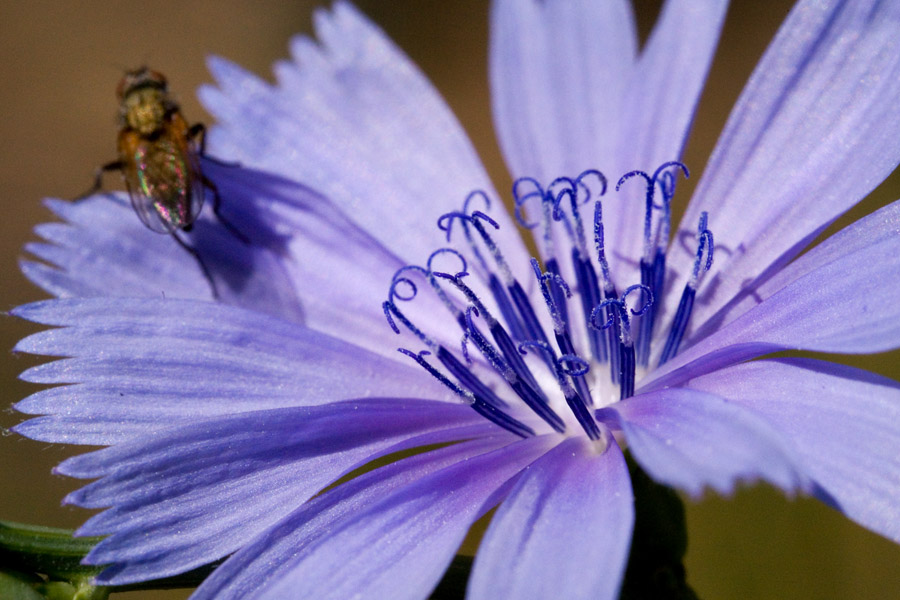Cichorium
|
Family: Asteraceae |
Perennials [annuals, biennials], [2-]10-120+ cm; taprooted. Stems usually 1, erect, branched distally or throughout, setose or hispid to pilose, or glabrous. Leaves basal and cauline; usually sessile; basal blades oblanceolate to lance-linear, margins usually runcinate-pinnate to dentate, rarely entire; cauline similar, smaller, margins dentate or entire. Heads mostly in glomerules (axillary and nearly sessile), some borne singly (on ± elongate peduncles). Peduncles (dimorphic: most 0-2 mm, some 12-85+ mm): the longer often slightly inflated distally, not bracteate. Calyculi 0 (or interpreted as outer phyllaries). Involucres ± cylindric, 3-5+ mm diam. Phyllaries 10-15+ in 2+ series, lance-ovate to lanceolate or linear, unequal, margins little, if at all, scarious, apices obtuse to acute. Receptacles flat, pitted, ± hispid, usually epaleate. Florets 8-25+; corollas usually blue [purple], sometimes pink or white. Cypselae brownish, ± prismatic (3-5-angled), not beaked, faces smooth, glabrous; pappi persistent, coroniform (of 40-60+, whitish, subequal, erose scales in 1-2 series). x = 9. The salad green known as endive (Cichorium endivia Linnaeus) may sometimes be found as an escape from gardens or agricultural plantings. It differs from C. intybus in having purple corollas, cypselae 1.5-2.5 mm, and pappi 0.6-1+ mm.
Fls all ligulate and perfect, blue (pink or white); invol bracts biseriate, the outer shorter; achenes glabrous, striate-nerved, sub-5-angled, or the outer slightly compressed; pappus of 1-2 series of scales, sometimes minute; branching, leafy-stemmed, lactiferous herbs with alternate, entire to pinnatifid lvs and several showy heads. 9, mainly Europe and Medit. reg. Gleason, Henry A. & Cronquist, Arthur J. 1991. Manual of vascular plants of northeastern United States and adjacent Canada. lxxv + 910 pp. ©The New York Botanical Garden. All rights reserved. Used by permission. |

